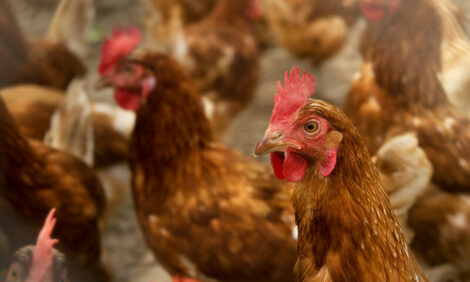



Hand in Hand: Alberta Industry and Research Centre
US - Alberta's forward thinking poultry industry supports operations and research projects at the University of Alberta's Research Centre. For Dr. Iwona Pawlina, executive director of the Centre, it's an ideal relationship."If you talk to producers in the poultry industry and if you understand what their needs are, you can better provide or focus your research to meet their needs," she says. It's been a close relationship, evolving since the centre opened its doors in 1986.
"We take every opportunity to listen to our industry's concerns and to share knowledge and technologies developed at the centre with our industry partners," Pawlina says. "We share research knowledge and transfer technologies through workshops, conferences, newsletters, fact sheets, presentations, publications and on-site visits.
"We're invited to industry meetings to speak. We also organize special events. For example, the centre organizes broiler breeder workshops in collaboration with Aviagen. These events, with expert presentations and a hands-on laboratory session, provide a great balance between theory and practice," she says. "Our goal is to maintain two-way communication instead of just reporting on what we have done."
* "If you talk to producers in the poultry industry and if you understand what their needs are, you can better provide or focus your research to meet their needs." |
|
Dr. Iwona Pawlina, executive director of the University of Alberta's Research Centre.
|
"One of the things that the industry told us, in terms of the strategic direction the industry would like to go, is to the value-added area," says Pawlina. "To stay competitive, our industry has to respond to ever changing consumer needs and concerns.
"For instance, the consumer is paying a little bit more for Omega 3 eggs - and the industry profits a bit more too. The industry would like to take advantage of opportunities like that." Extracting valuable compounds such as bioactive peptides from eggs is another such opportunity the industry is interested in. Bioactive peptides are small fragments from egg proteins that may have positive implications for a wide range of chronic diseases like cardiovascular diseases and HIV. They may also be used in functional foods, in medicine or in pharmaceuticals.
The cooperation between industry and academia makes the centre unique in Canada. "The level of partnership with industry is very well established. I believe they recognize that, with their support, we can have the expertise, equipment and facilities to handle a variety of types of research," adds Pawlina.
The centre has 13 researchers from various disciplines, some of who deal strictly with poultry issues. Others support not only poultry but other commodities in the area of food safety, market analyses and consumer research.
In addition, Alberta Agriculture and Rural Development contributes expertise in research, technology transfer and commercialization. Sharing resources and facilities allows the organizations to perform more efficiently and avoids duplication in research efforts.
The poultry industry contributes to the research centre's operating costs and also funds individual research projects.
The centre attracted $2 million in research funds this year. Federal and provincial sources contributed about $730,000. The industry invested $240,000 plus their share of the $800,000 the centre received from the Alberta Funding Consortium and Alberta Livestock Industry Development Fund. The rest came from national industry supporters.
The centre's operating budget amounts to about $2.5 million a year. Among other funding sources this year, the poultry industry also contributed about $220,000 to the operating budget, up from $194,000 the year before.











